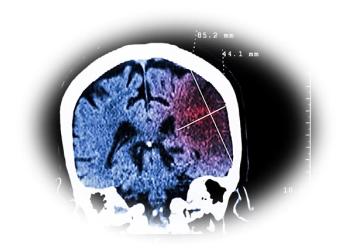
iECG May Prove Cost-Effective for Screening Occult Atrial Fibrillation
A new study finds that iPhone-based technology deployed in local pharmacies can detect asymptomatic atrial fibrillation. iECG anyone?
New evidence has emerged that population-wide screening for atrial fibrillation (AF) may reduce the burden of thrombotic complications from asymptomatic AF. The cost-effectiveness of population-based screening has not been previously reported. However, emerging data suggest that iPhone-based technology for AF screening is both feasible and cost-effective.
The
This was a moderately sized cross-sectional study of 1000 outpatients aged ≥65 years (mean age 76 ± 7 years; 44% male) at 10 pharmacies in demographically variable geographic areas of Sydney, Australia.2 Patients with a severe coexisting medical condition that prevented participation (eg, severe dementia, terminal illness) were excluded. A pharmacist conducted screening sessions that consisted of pulse palpation and an ECG recording using an iPhone electrocardiogram (iECG), which was over-read by a cardiologist. For those with suspected AF, referral to a general practitioner was made and a 12-lead ECG subsequently performed. An automated AF algorithm (98% sensitivity, 97% specificity) was applied to all iECG recordings.
Approximately 1.5% of patients screened (mean age 79 years; CHA2DS2-VASc score ≥2) were identified with asymptomatic AF (overall prevalence 6.7%). The automated iECG algorithm showed 98.5% (CI, 92%-100%) sensitivity for AF detection and 91.4% (CI, 89%–93%) specificity. In the cost-effectiveness analysis, the authors used treatment/outcome data from a United Kingdom cohort of 5555 patients with incidentally detected asymptomatic AF3 and incorporated costs of iECG screening ($20), diagnostic assessment of AF ($252), and anticoagulation and monitoring ($803.80 per annum). Based on 55% warfarin prescription adherence, the incremental cost-effectiveness ratio would be $5988 per quality adjusted life year gained and $30,481 for preventing one stroke. These results were sensitive to variation in the baseline assumptions, including the adherence to guideline recommendations for anticoagulant prescriptions (40% to 80%) and cost of novel oral anticoagulants (NOACs).
If the assumptions for cost hold true, these results suggest that use of pharmacy-based iECG screening is able to detect occult AF and can be cost-effective. However, as mentioned in the published article, these results may change if the cost of NOACs is incorporated into the analysis. In addition, the cost of iECG screening and follow-up care may be highly variable depending on geographic location and access to medical care. The sensitivity and specificity of the iECG was within acceptable limits. Therefore, future iterations of professional society guidelines on AF may indeed incorporate iECG screening into routine recommendations; at this time, however, its role in detecting and guiding is still largely experimental.
References:
1. Lau JK, Lowres N, Neubeck L, et al. iPhone ECG application for community screening to detect silent atrial fibrillation: A novel technology to prevent stroke.
2. Lowres N, Neubeck L, Salkeld G, et al. Feasibility and cost effectiveness of stroke prevention through community screening for atrial fibrillation using iPhone ECG in pharmacies. The SEARCH-AF study.
3. Martinez C, Katholing A, Freedman SB, et al. Adverse prognosis of incidentally detected ambulatory atrial fibrillation.
Newsletter
Enhance your clinical practice with the Patient Care newsletter, offering the latest evidence-based guidelines, diagnostic insights, and treatment strategies for primary care physicians.





















































































































































































































































































